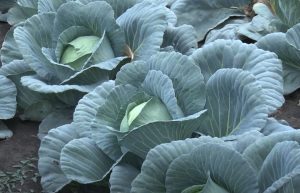At Veletržnica Belgrade during the previous week, the highest demand was recorded for cabbage, the price of which increased by 7% during November. Cabbage arrives mainly from Vojvodina and Čačak, while the largest production in Serbia is achieved by the regions of Šumadija and western Serbia. On the international level, China, India, Russia, Japan, South Korea, Ukraine, Indonesia, Poland, Romania and the United States stand out among the largest producers.
Cabbage prices on the Kvanta market vary. Classic cabbage can be bought at prices from 60 to 80 dinars per kilogram, while red and Chinese are more expensive. Red cabbage costs from 80 to 120 dinars, Chinese cabbage from 150 to 200 dinars, and pickled cabbage from 120 to 160 dinars. Futos cabbage, an autochthonous variety with a protected geographical origin, is most in demand in this period, because November is the traditional time for pickling cabbage and preparing holiday specialties.
Do people take cabbage today? Manufacturers are pessimistic
Futo cabbage, which is recognizable for its quality, is increasingly difficult to find. The president of the Futoska Cabbage Association, Miroljub Janković, pointed out that the season for this type of cabbage is coming to an end. This year, the crop was very weak due to the reduction of the area under planting and a significant drop in the yield, which was halved. Producers express concern about the possibility that domestic needs will not be fully met.

This trend indicates the importance of preserving futsal cabbage as a Serbian brand. Given its popularity and demand, producers face challenges in securing sufficient quantities, especially in light of reduced production and limited yields. Although the prices on the market are varied, the quality and recognition of futsal cabbage make it extremely popular among customers.
Despite these difficulties, the demand for cabbage remains high, as it is a basic ingredient in many traditional dishes, especially in winter. This information confirms the importance of domestic agricultural production and the need for its further improvement in order to preserve tradition and meet the needs of the domestic market.
Source: 24 Seven
Source: boljazemlja.com


